Electric scooters have exploded in popularity as a fun, eco-friendly, and cost-effective way to travel around town. Whether you want to ditch your car for your daily commute, cruise leisurely on weekends, or zip around bike paths for errands, finding the best scooter is key. In this 2025 guide, we’ll walk you through every aspect of how to choose an electric scooter—from range and speed to build quality, safety features, and total cost of ownership—so you can ride with peace of mind.
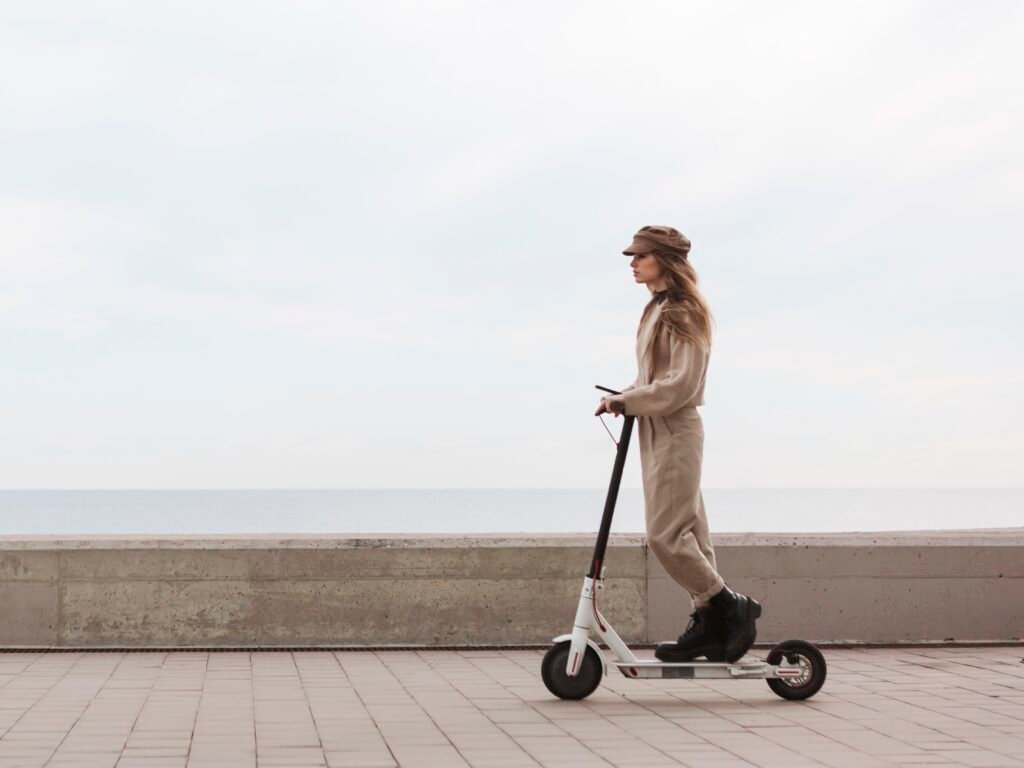
Table of Contents
- Why an Electric Scooter?
- Define Your Purpose & Rider Profile
- Range & Battery Life: How Many Kilometers Can You Go?
- Powertrain Considerations
- Top Speed & Local Regulations
- Weight, Portability & Foldability
- Tires, Suspension & Riding Comfort
- Braking Systems & Safety Features
- Lights, Visibility & Night Riding
- Build Quality & Scooter Manufacturer Reputation
- Price, Total Cost & Warranty
- Where to Buy an Electric Scooter (Online & In-Store)
- Tips for First-Time Riders
- Riding Responsibly
- Comparison: Best Electric Scooter Brands of 2025
- Choose The Right Motor: Single vs Dual
- Commuter Scooters for City Life
- FAQs: Common Questions About Buying an Electric Scooter
1. Why an Electric Scooter?
In recent years, electric scooters have become one of the most popular personal-mobility devices globally. Here’s why:
- Eco-Friendly Transport: No tailpipe emissions—zero local pollution.
- Cost Savings: Electricity costs are a fraction of what you’d pay for gas or parking.
- Convenience: Foldable models can be carried onto public transit or stowed under your desk.
- Fun & Leisure: Many models reach 40 km/h for an exhilarating ride.
- Urban Mobility: Maneuver easily through traffic, use bike paths, and reduce your carbon footprint.
But with dozens of scooter makers and hundreds of models on the market, choosing the best electric scooter may feel overwhelming. Use this guide as your buying guide checklist to narrow down options quickly.
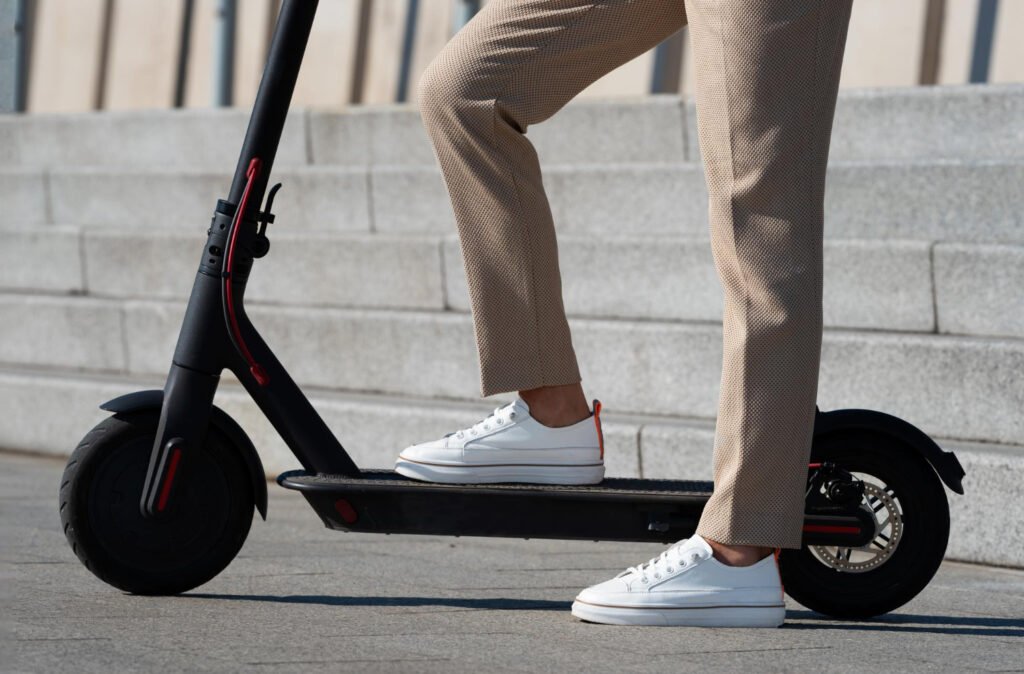
2. Define Your Purpose & Rider Profile
Before you acquire an electric scooter, be crystal clear on how and where you’ll ride:
- Daily Commute:
- Distance: 5 – 20 km round trip.
- Terrain: Mostly flat urban streets, some speed bumps.
- Need: At least 20 km real-world range; reliable brakes; decent suspension.
- Look for: A lightweight urban scooter with foldable design, powerful motor (≥ 350 W) for quick starts at intersections, and a comfortable deck.
- Last-Mile Travel (Subway/Bus to Office):
- Distance: 1 – 5 km from station to work.
- Need: Ultra-portable, weighs under 12 kg, folds in seconds.
- Prioritize: Quick folding mechanism, removable battery for easy charging at your desk.
- Weekend Fun & Recreation:
- Terrain: Parks, bike paths, light off-road trails.
- Want: Speedy experience, maybe up to 40 km/h; cruise control; bright LED lights for dusk.
- Ideal: Mid-range models with dual wheel shock absorbers, wide deck, and good top speed.
- Off-Road or Rugged Terrain:
- Terrain: Gravel paths, slight dirt trails, grassy areas.
- Require: Twin or at least a powerful motor scooter (≥ 500 W) with aggressive tread tires, front and rear suspension, and strong disc brakes.
- Student or Campus Use:
- Distance: Short hops between classes, library, dorms.
- Look for: Lightweight, low-power (250 W) to stay within campus regulations, easy to store in a dorm.
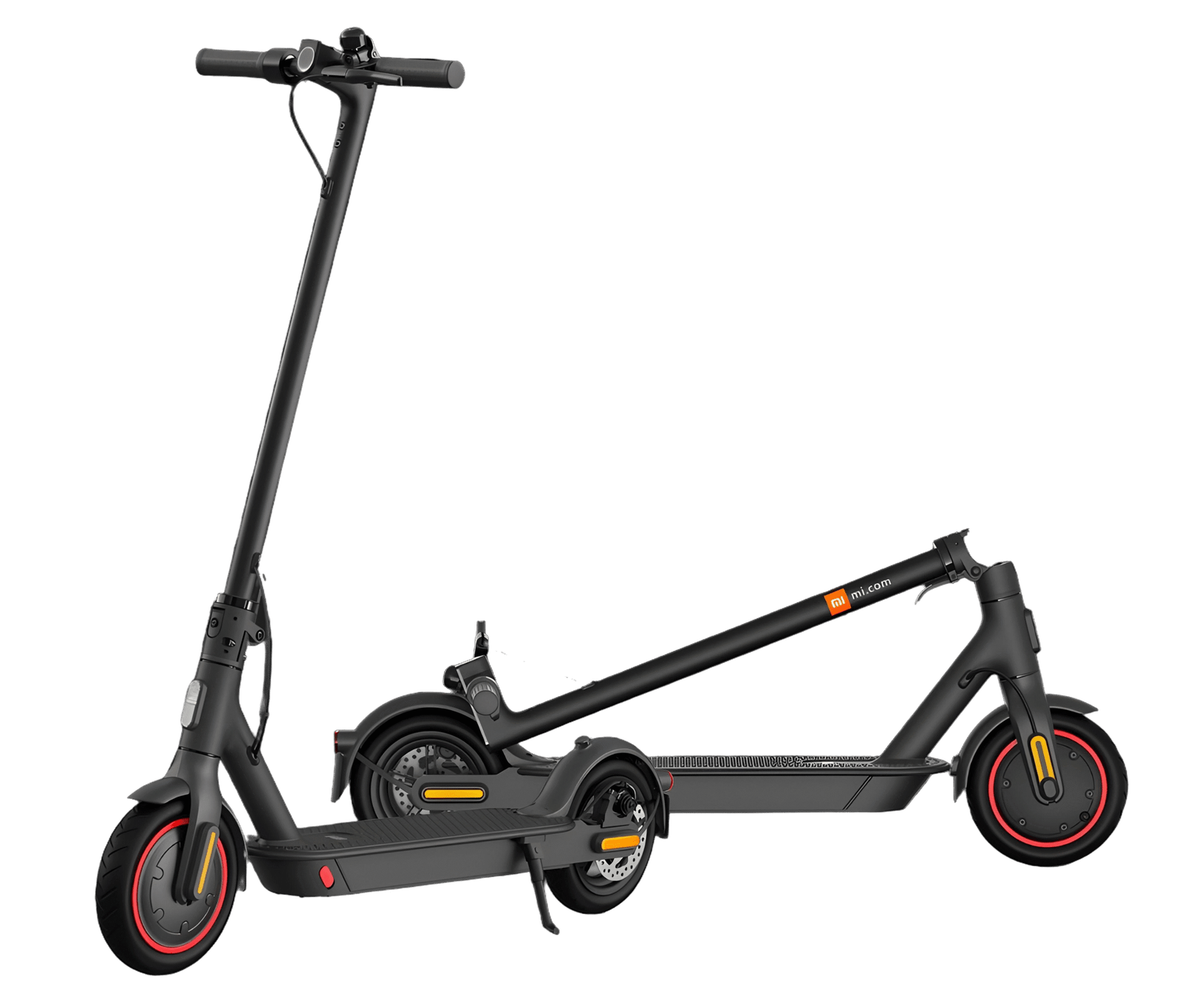
Image courtesy of Xiaomi Global / Mi.com
3. Range & Battery Life: How Many Kilometers Can You Go?
When it comes to range, think in terms of real-world conditions, not just the manufacturer’s ideal numbers.
- Short-Commute Range:
- 10 – 15 km (good for short “last-mile” trips).
- Example: If you only need to ride an electric scooter from a train station to work (e.g., 3 km each way), a 12 km range is sufficient.
- Urban Rider Range:
- 15 – 30 km (most scooters fall here).
- Tip: Consider models with at least 300 Wh battery (36 V × 10 Ah) to realistically get 20 km under average conditions (70 kg rider, mixed speeds).
- Long-Distance Range:
- 30 + km (for those who purchase an electric scooter to travel farther between charging).
- If you live in a sprawling city or plan to do day trips, target 40 km + range, which often requires ≥ 500 Wh battery modules.
Pro Tip: Battery life is affected by rider weight, incline, stop-and-go traffic, headwinds, and even temperature (cold weather reduces capacity). Aim for a buffer: if you need 20 km, look for a 25 km-rated model.
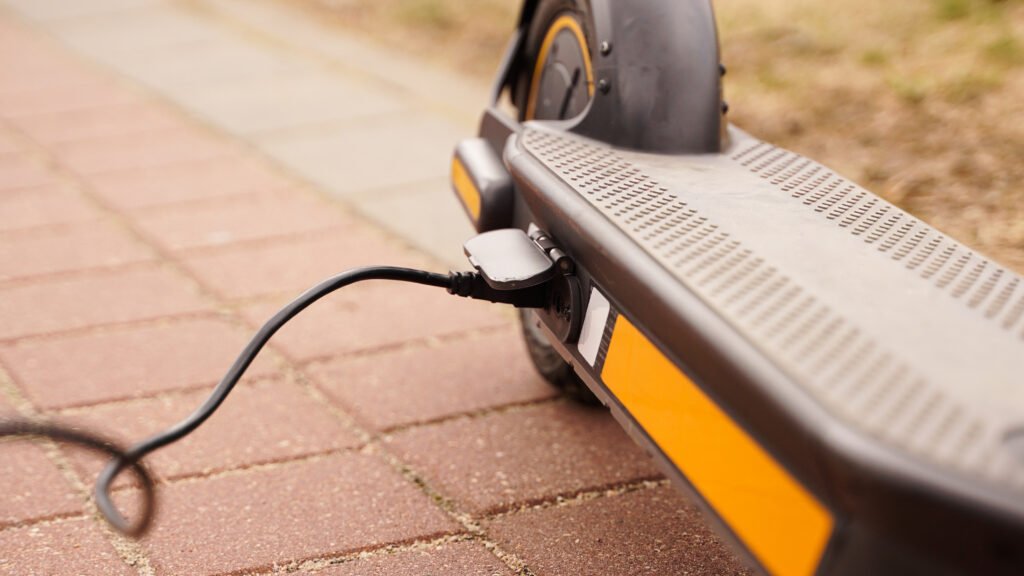
4. Powertrain Considerations
The powertrain determines acceleration, hill-climbing ability, and overall responsiveness. Here’s how to parse specs:
- 250 W – 350 W Motors:
- Best for flat city roads, light riders (< 70 kg), and speeds up to 25 km/h.
- Examples: Many entry-level electric scooters marketed to students or casual riders.
- 500 W + Motors:
- Recommended for hills, heavier riders (> 80 kg), or anyone who wants quick acceleration.
- If you frequently encounter a 10 % incline, aim for a powerful motor in the 500 W – 800 W range.
- Twin Motor Setups:
- Each wheel has its own motor (often two 350 W motors for a total of 700 W).
- Twin motor scooters excel at traction on rough terrain or steep inclines.
- They cost more, but if you need off-road capability or plan to carry cargo, this is a solid choice.
- Motor Type (Hub vs. Belt Drive):
- Hub-motor: Quiet, low maintenance, fully enclosed. Most budget models use hub motors.
- Belt drive or chain drive: More complex, higher maintenance, but can deliver higher torque and better hill performance.
Note: “Voltage” alone (e.g., 36 V, 48 V) doesn’t guarantee power. Always check wattage (W) or torque (N·m) to gauge performance.
5. Top Speed & Local Regulations
- Most scooters top out between 20 – 25 km/h (ideal for bike lanes and city streets).
- Premium models can reach 40 – 50 km/h (not allowed everywhere).
- Local laws may restrict faster speeds:
- In the EU, many e-scooters are limited to 25 km/h by law.
- In North America, rules vary by state/province—some cities cap at 24 km/h.
Riding a scooter at 40 km/h without proper safety gear can be dangerous. Always verify local regulations and wear a helmet.
6. Weight, Portability & Foldability
If you’ll carry your electric scooter on and off public transit or up stairs:
- Aim for under 15 kg total weight (20 kg is too heavy unless you never carry it).
- Look for quick-fold mechanisms—some fold in under 3 seconds.
- Check if the folded size fits your locker or under-desk space.
- A removable battery is a bonus: you can get an electric scooter and leave the battery at your desk if you must park outdoors.
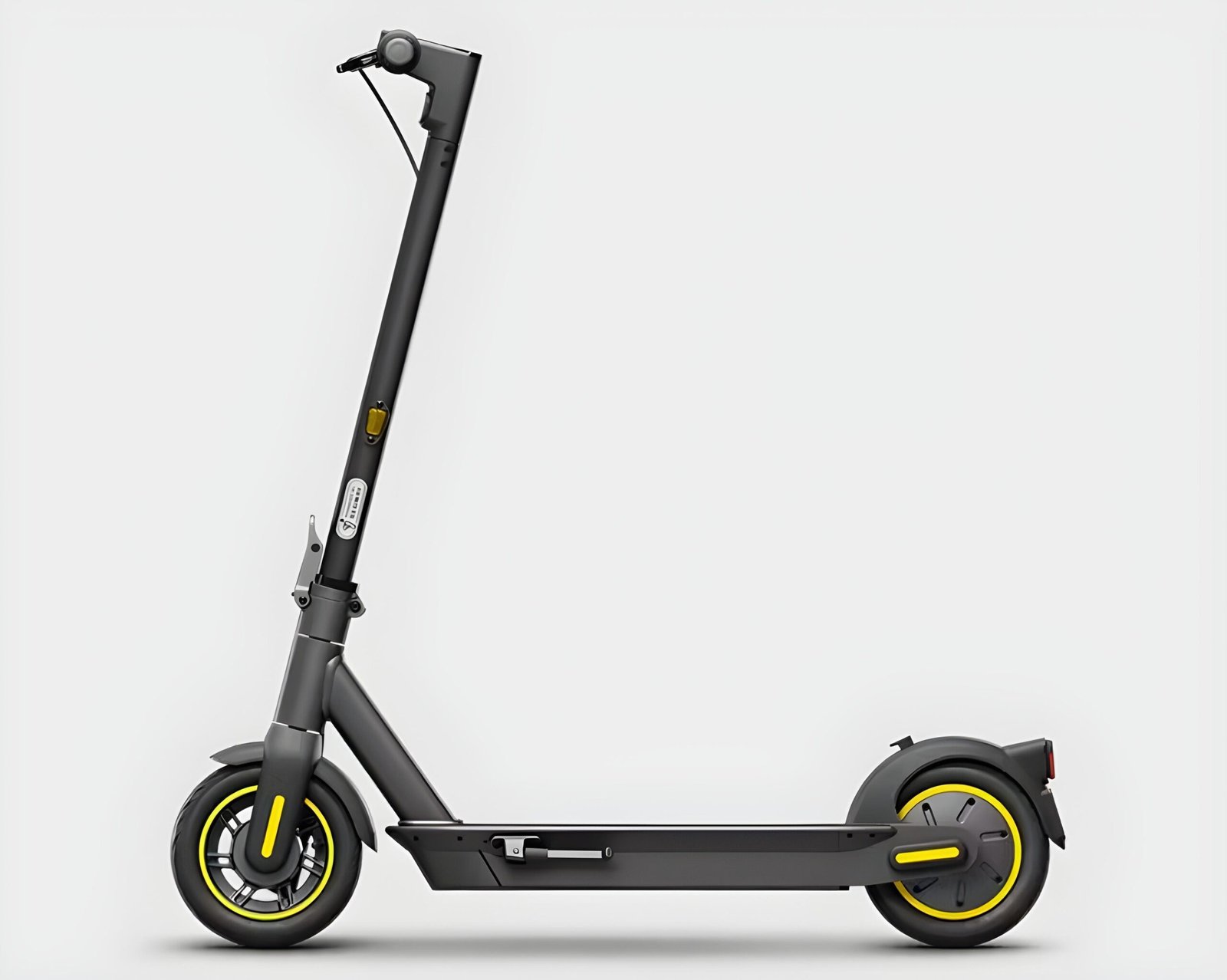
Image courtesy of Segway-Ninebot / segway.com
7. Tires, Suspension & Riding Comfort
Your ride quality depends heavily on tire and suspension choice:
- Pneumatic (Air-Filled) Tires:
- Provide better shock absorption and comfort for bumpy roads.
- Require occasional inflation and are prone to punctures unless you install a puncture-resistant liner.
- Solid (Airless) Tires:
- Zero maintenance—never go flat.
- Less comfortable over potholes or uneven pavement.
- Suspension Systems:
- Front suspension only: Basic comfort improvement.
- Dual suspension (front + rear): Best for light off-road or cobblestone streets.
- If you regularly face rough surfaces, consider a model with a powerful powertrain and dual suspension to keep you comfortable and stable.
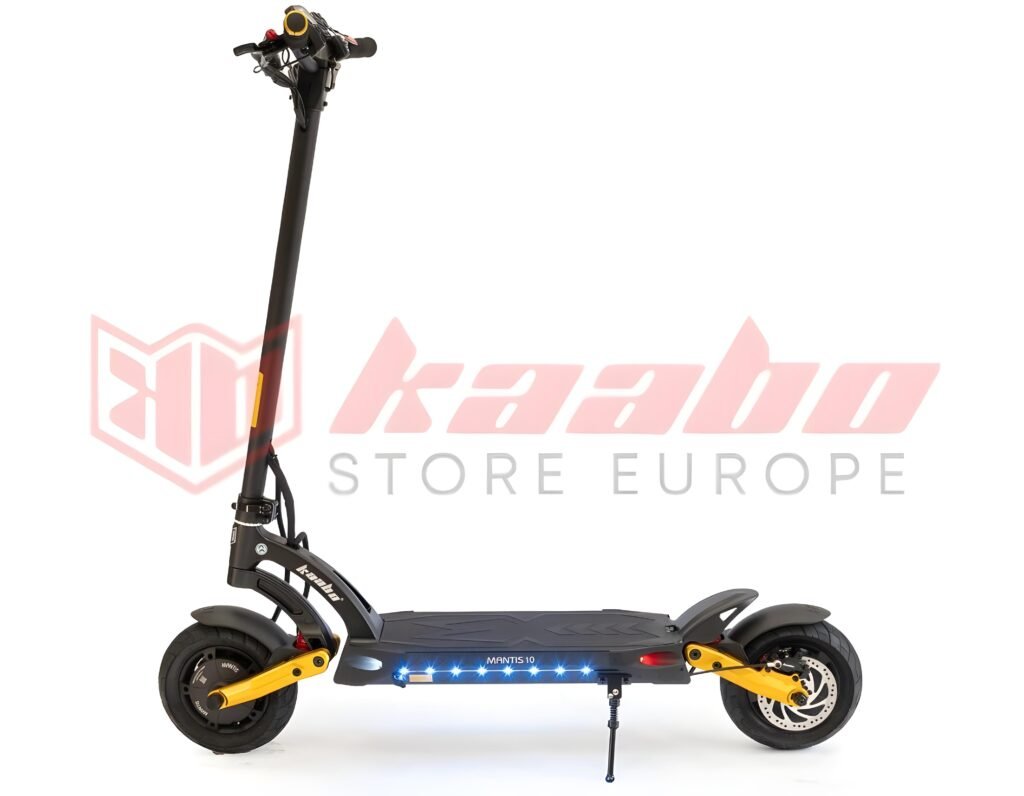
Image courtesy of Kaabo / kaabostore.eu
8. Braking Systems & Safety Features
Safety should never be an afterthought. Look for:
- Disc Brakes (Mechanical or Hydraulic):
- Provide powerful stopping force, even at higher speeds.
- Hydraulic discs self-adjust; mechanical discs need cable tension checks.
- Drum Brakes:
- Enclosed system, low maintenance, but less powerful than discs.
- Electronic/Regenerative Brakes:
- Slow down the scooter when you pull the lever, extending battery longevity slightly.
- Should be treated as secondary braking—always have mechanical brakes as primary.
- Anti-Lock Braking System (ABS):
- Rare on e-scooters, but provides better control on slippery surfaces.
- Additional Safety:
- Reflective stickers and side lights for night visibility.
- A bell or horn to alert pedestrians.
- Locking system or ability to attach a U-lock to the deck.
Check out our “Safety Checklist Before Every Ride”
9. Lights, Visibility & Night Riding
If you plan to ride after dusk, make sure your scooter has:
- Front Headlight (≥ 50 lumens):
- Illuminates the road ahead so you can see potholes or obstacles.
- Rear Brake Light:
- Automatically lights up when you apply the rear brake, alerting traffic behind you.
- Side Reflectors or Under-Deck LED Strips:
- Increase your visibility from multiple angles.
- Some models have rear reflectors for added safety.
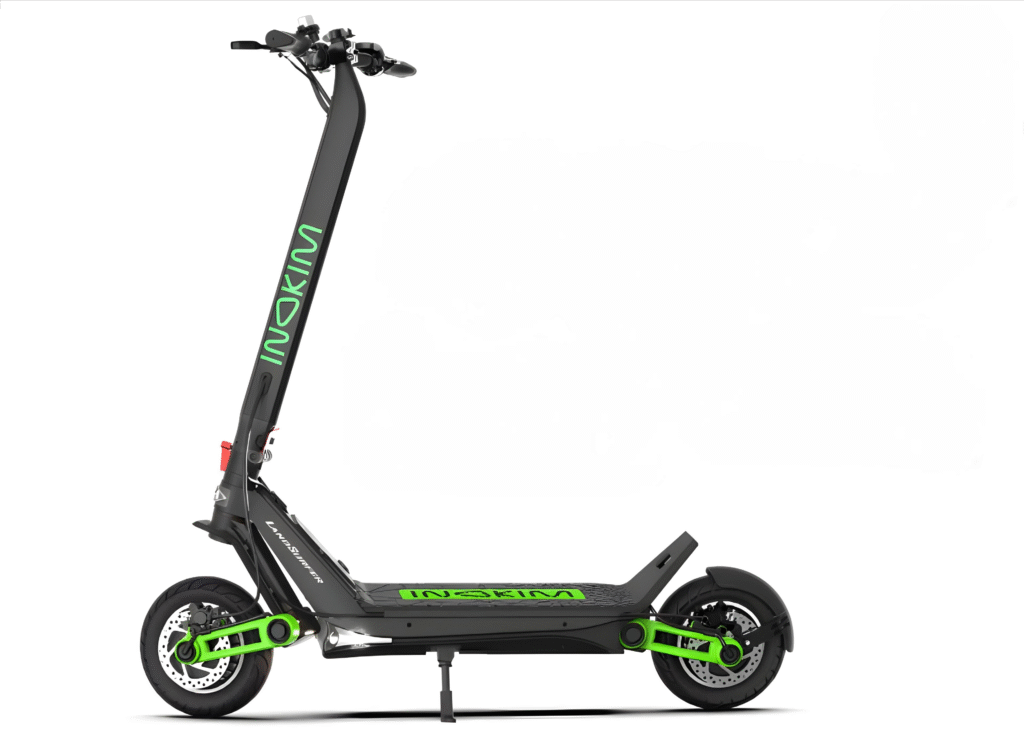
10. Build Quality & Scooter Manufacturer Reputation
A reputable scooter maker matters. Here’s how to vet them:
- Material & Frame:
- Aluminum alloy frames (6000-series) are common—strong and lightweight.
- Some high-end models use magnesium alloys or carbon fiber parts for extreme weight savings.
- IP Rating (Water & Dust Resistance):
- Look for IP54 or higher if you ride in light rain or live in a dusty environment.
- IP65+ means fully dust-tight and can handle water jets (but still avoid deep puddles).
- Customer Support & Warranty:
- Top manufacturers offer at least one year of warranty on frame and electronics.
- Check if they have service centers in your region for repairs.
- Brand Reputation:
- Brands like Xiaomi, Segway-Ninebot, Kaabo, and Inokim are known for quality.
- Local or emerging brands may be cheaper, but check online reviews—scooter may have poor after-sales support.
11. Price, Total Cost & Warranty
When budgeting:
- Entry-Level Models ($300 – $600):
- Single motor (~250 W – 350 W), range ~15 – 20 km, minimal suspension.
- Good for casual riders and students.
- Mid-Range urban Scooters ($600 – $1,200):
- Single or two motor, range ~20 – 30 km, basic suspension, decent build materials.
- Ideal if you commute daily less than 20 km.
- High-Performance & Off-Road ($1,200 +):
- two motor (700 W – 1,500 W), range ~40 – 60 km, full suspension, fat “all-terrain” tires.
- If you want to conquer hills, go off-road, or carry cargo, this is where you invest.
Hidden Costs to Watch:
- Replacement Tires: Air-filled tires eventually need new inner tubes or puncture-resistant liners.
- Battery Replacement: After ~2 – 3 years (200 – 400 charge cycles), battery capacity may degrade 20 % – 30 %.
- Accessories: Helmet, lock, phone mount, fenders can add $50 – $200.
- Shipping & Import Fees: If you import from overseas, factor in customs duties.
Always check the warranty (at least one year on frame/electronics), and see if extended warranties or accidental damage protection are available. This gives you assurance that your investment is protected.
12. Where to Buy an Electric Scooter (Online & In-Store)
- Manufacturer Websites:
- Best for warranties and official customer support.
- Look for free shipping or local distribution centers.
- Major E-Commerce Retailers:
- Amazon, eBay, or Lazada (Asia), where you can read user reviews and often find deals.
- Be cautious of third-party sellers—always verify the seller’s rating.
- Specialized E-Bike & E-Scooter Shops:
- Local stores let you test ride before you buy, which is invaluable.
- They often offer on-site servicing and spare parts.
- Classifieds & Secondhand:
- If you’re on a tight budget, look for local listings (Craigslist, Facebook Marketplace).
- Always test the scooter in person—check battery health (maximum speed & range) before buying.
13. Tips for First-Time Riders
Got your first electric scooter ?
- Start Slow: Keep your first few rides under 15 km/h until you’re comfortable balancing.
- Practice Braking: Get used to how quickly disc brakes engage.
- Wear Protective Gear: Helmet is mandatory, plus gloves and knee pads if you want extra safety.
- Check Local Regulations: Some cities require you to ride in bike paths or on sidewalks.
- Stay Aware: Always watch for cars, pedestrians, and road hazards.
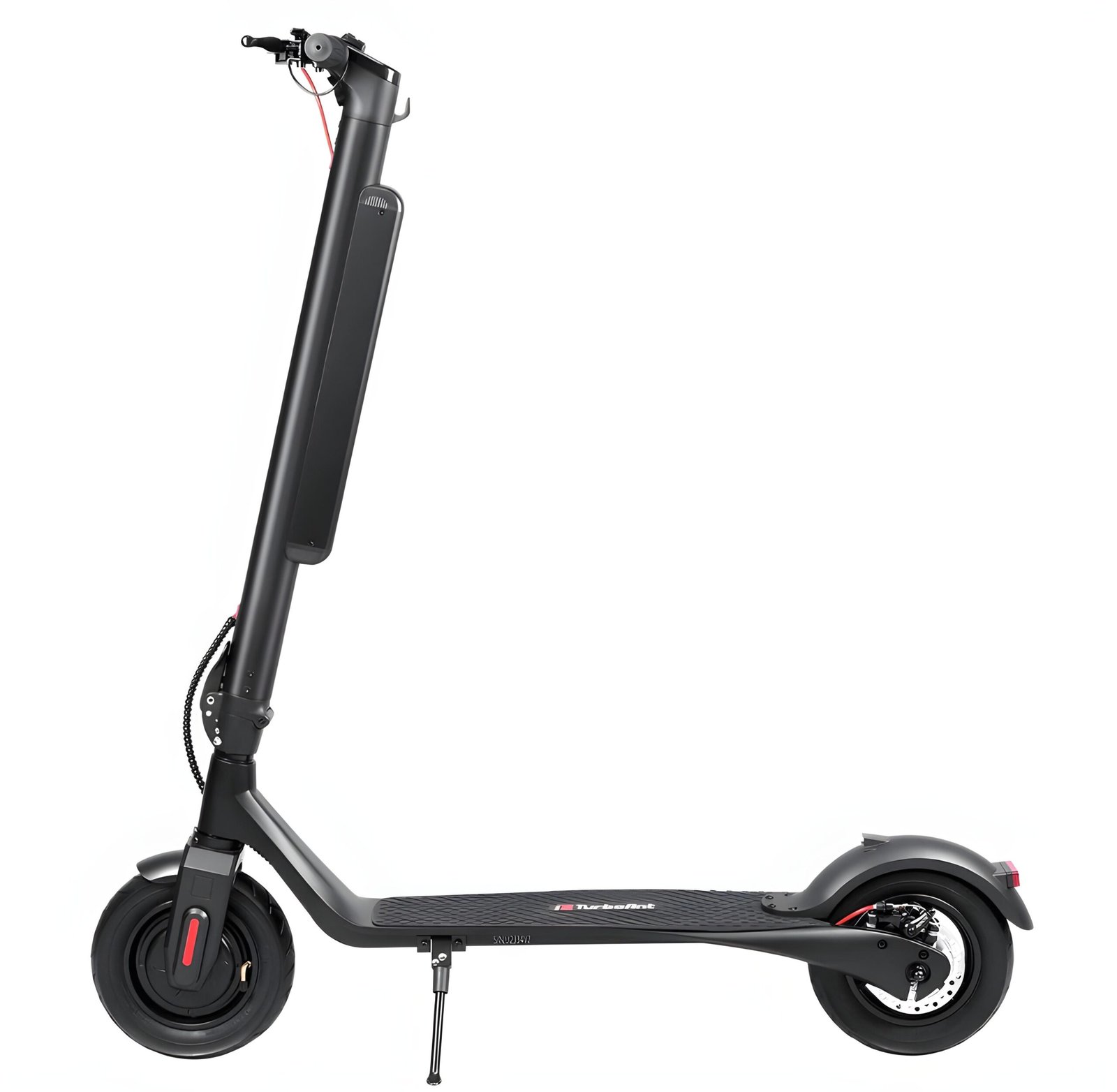
Image courtesy of TurboAnt / turboant.com
14. Riding Responsibly
- Obey Traffic Laws: Don’t ride on sidewalks unless local laws allow it.
- Respect Pedestrians: Yield right of way, especially in crowded urban areas.
- Don’t Overload: Most scooters are rated for 100 – 120 kg. Exceeding this can damage the powertrain and frame.
- Avoid Wet Surfaces: Even water-resistant scooters can hydroplane—braking distance doubles on wet roads.
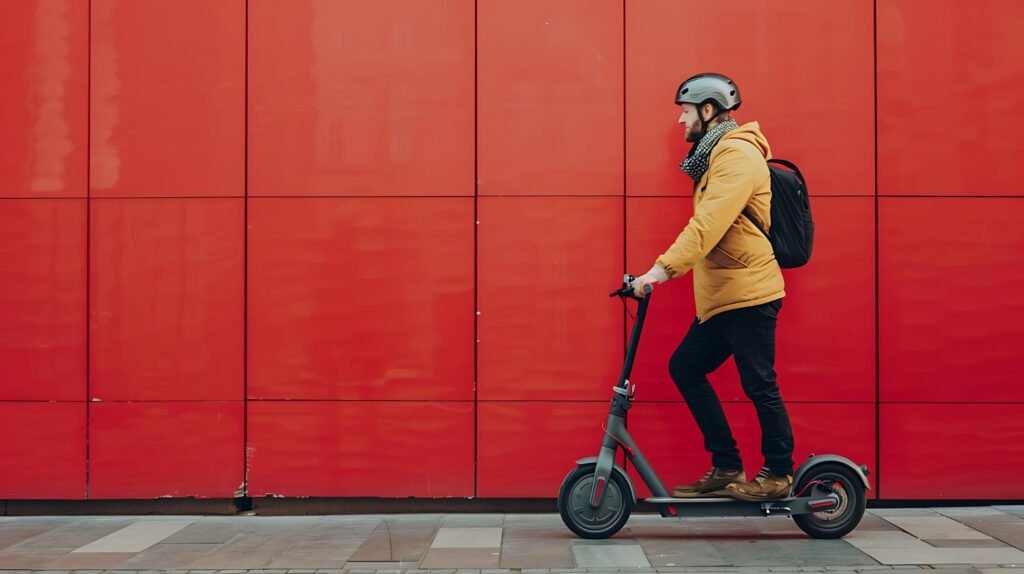
15. Comparison: Best Electric Scooter Brands of 2025
| Brand & Model | Motor(s) | Range (km) | Top Speed (km/h) | Weight (kg) | Price Range | Notable Features |
|---|---|---|---|---|---|---|
| Xiaomi M365 Pro 2 | 300 W (600 W peak) | 45 | 25 | 14.2 | $500–$650 | Removable battery, E-ABS + disc, IP54 |
| Segway Ninebot Max G30P | 350 W | 65 | 25 | 18.7 | $700–$850 | Large deck, 10-inch pneumatic tires, built-in charger |
| Kaabo Mantis 10 Dual Plus | 2×1000W (2000W) | 90 | 70 | 30 | $1,500 – $1,800 | Dual suspension, semi-hydraulic brakes, 10" pneumatic tires, foldable design |
| Inokim OXO Super | 2×1000 W (2600 W peak) | 110 | 65 | 33.5 | $2,000–$2,500 | Off-road tires, hydraulic brakes |
| TurboAnt X7 Max | 350 W | 52 | 32 | 15 | $430 | Detachable battery, quick folding, dual braking system |
Note: Brands like Xiaomi, Segway-Ninebot, and Kaabo are among the top scooter makers known for reliability and robust powertrain performance.
16. Choose The Right Motor: Dual vs. Single
- Single Motor (250 W – 350 W):
- Pros: Lightweight (12 – 15 kg), under $700, suitable for flat–moderate terrain.
- Cons: Struggles on hills > 10 % grade, slower acceleration.
- Dual Motor (500 W – 1,500 W total):
- Pros: Excellent hill climbing, stable at high speeds, good for off-road.
- Cons: Heavier (20 – 30 kg), pricier ($1,000 +), more maintenance.
Recommendation: If you live in a hilly area or want to ride trails, invest in a dual setup. Otherwise, a single setup around 350 W is enough for most urban scooters.
17. Commuter Scooters for City Life
When shopping for an urban commuter:
- Range: Aim for 25 – 35 km real-world range.
- Weight: Under 15 kg so you can carry it onto public transit.
- Foldability: One-step folding mechanism is ideal.
- Battery: Look for 18650 + 21700 cell packs rated 350 Wh + for longer life.
- Tires: 8 – 10 inch pneumatic for comfort in pothole-ridden city streets.
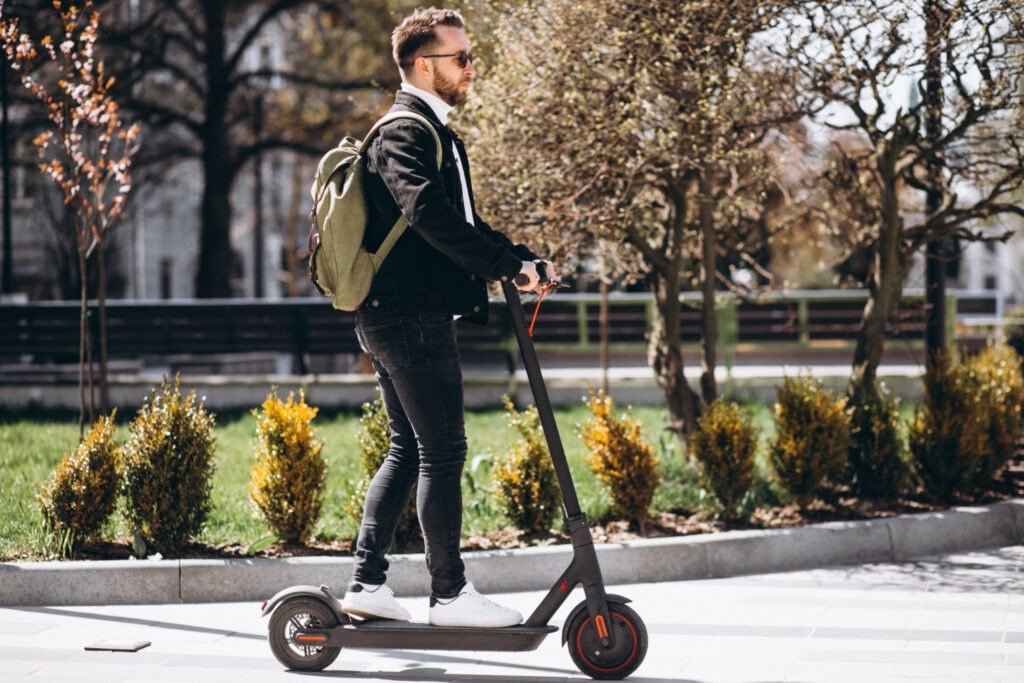
18. FAQs: Common Questions About Buying an Electric Scooter
A: For beginners, look for a single motor (250 W – 350 W), top speed of ≤ 25 km/h, under 15 kg weight, and a simple fold. Examples: Xiaomi M365 Pro 2, TurboAnt X7 Pro.
A: Use authorized dealers or manufacturer websites. Check customer reviews, warranty terms, and return policies. Avoid unknown third-party sellers, as you may risk getting a non-genuine or defective unit.
A: Most chargers take 3 – 8 hours to go from 0 % to 100 %. If you need faster charging, look for models with a 1 – 2 hour “quick charge” option, though this can reduce overall battery longevity over time.
A: In most cities, e-scooters are allowed only in biking lanes or on roads with speed limits ≤ 50 km/h. Check your local regulations. Always wear a helmet and high-visibility clothing.
A:
Motor & Electronics: Minimal maintenance—just keep connections clean and dry.
Brakes: Inspect monthly. Adjust cable tension or bleed hydraulic lines if braking feels spongy.
Tires: Check pressure weekly (if pneumatic) to avoid flats.
A: Yes if you need:
Better hill climbing (steep inclines).
Faster acceleration (e.g., merging into busy roads).
Riding off-road or carrying heavy loads.
If your route is flat and you care about portability, a good 350 W single motor is usually enough.
A: Electric scooters have really taken off lately! According to Precedence Research, the global market was worth about $48.9 billion in 2025 and is expected to grow to over $320 billion by 2034. Looks like they’re here to stay!
Conclusion
By following this in-depth 2025 buying guide, you’ll know exactly how to choose an electric scooter for your needs, budget, and riding style.
